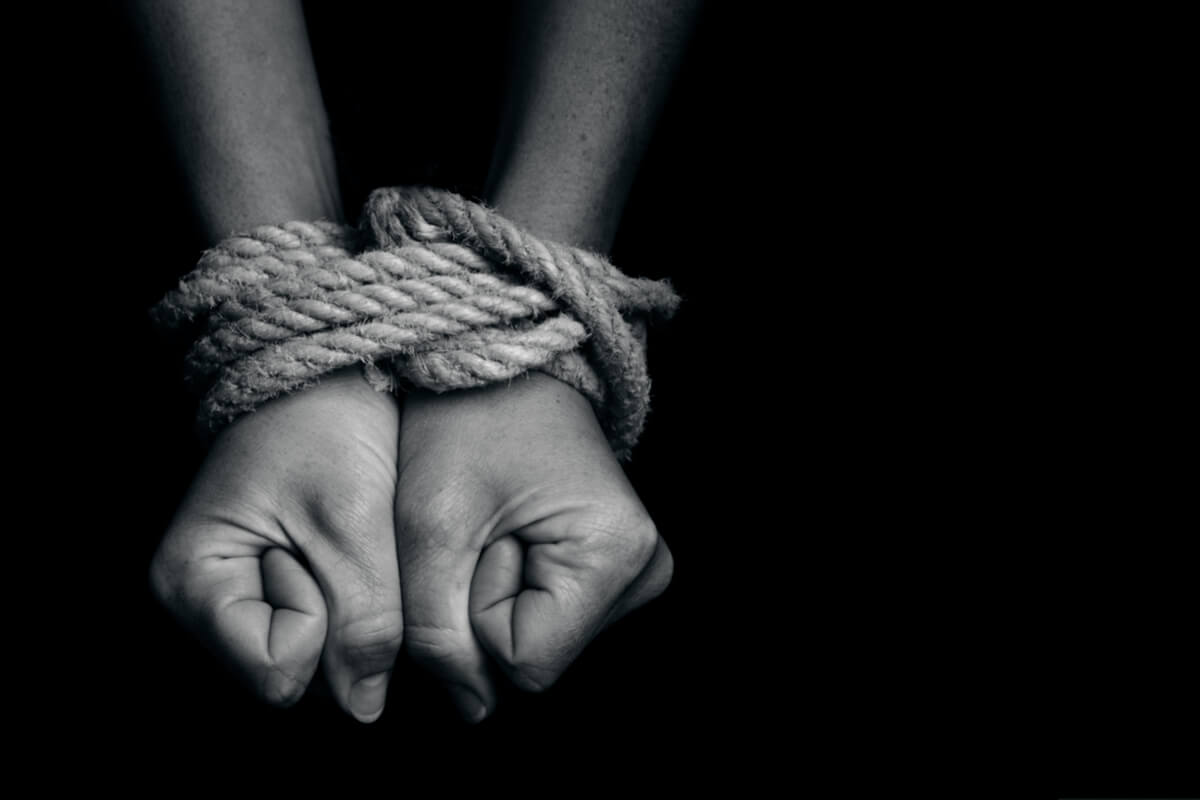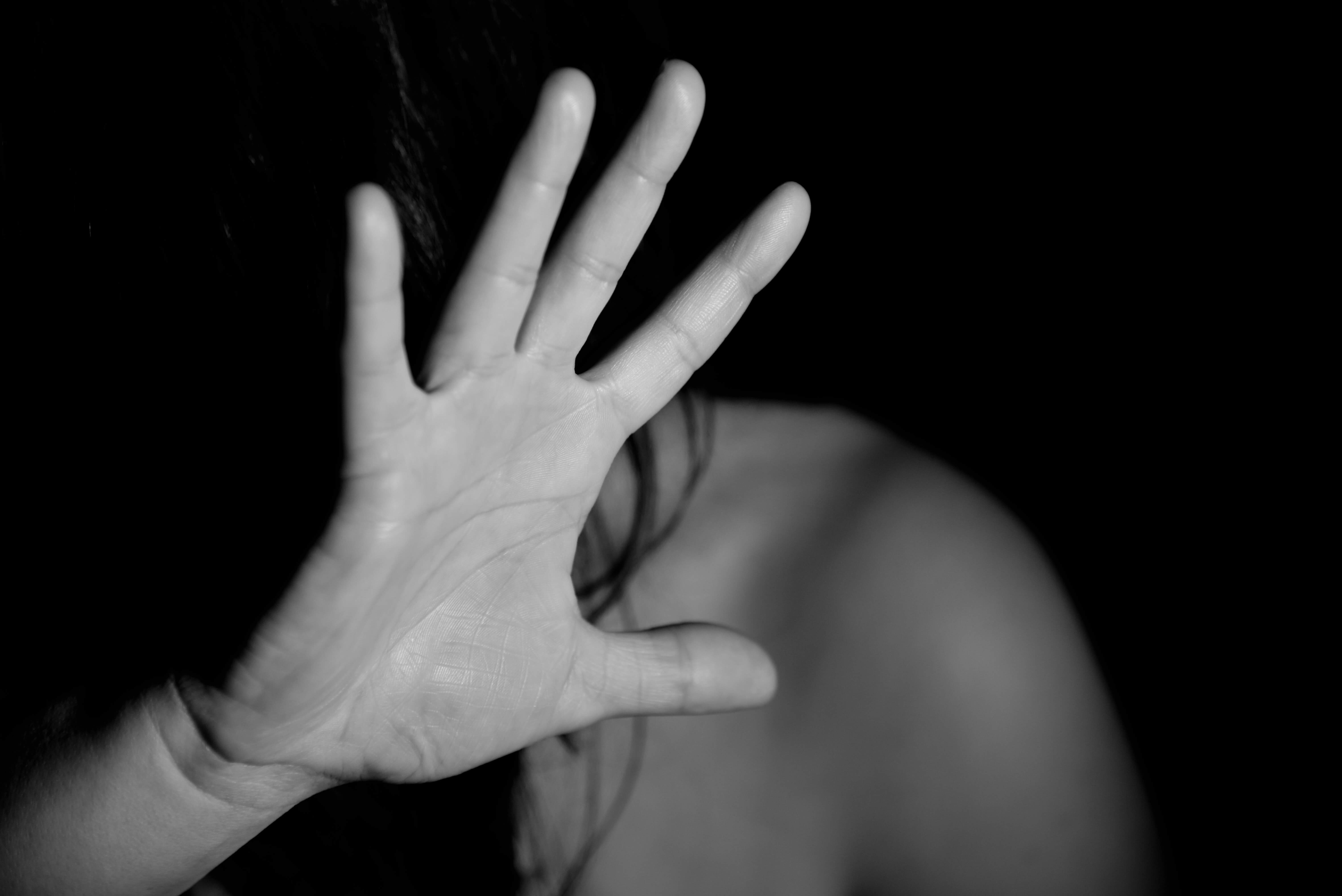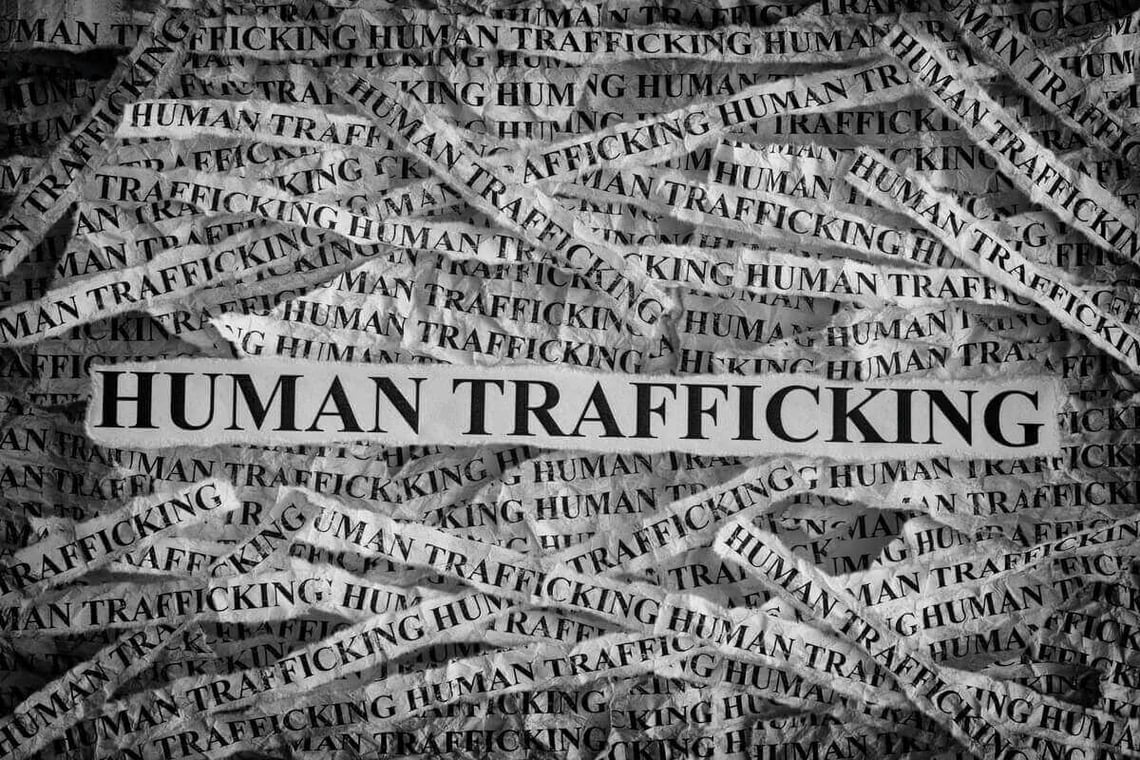What Is Human Trafficking?
Human trafficking is modern-day slavery. It involves the use of force, fraud, or coercion to obtain human labor or commercial sex act. Victims of trafficking can be anyone and live anywhere. (1)
Communities that experience hardships such as adversity, violence, discrimination, economic vulnerability, high crime rates, or dependence may be easy prey for traffickers. (2)
It is our goal to prevent these heinous acts by raising human trafficking awareness.
Facts and Statistics about Human Trafficking
- 63% of identified traffickers were men and 37% women. (3)
- Globally, the average cost of a slave is $90. (3)
- The average age a teen enters the sex trade in the U.S. is 12 to 14-year-old. Many victims are runaway girls who were sexually abused as children. (3)

Types of Human Trafficking
There are six kinds of human trafficking:
1. Domestic Servitude
Employees working in private homes are forced or coerced into serving and/or fraudulently convinced that they have no option to leave. (4)
43% of victims are trafficked domestically within national borders. (3)
2. Sex Trafficking
Women, men, or children that are forced into the commercial sex industry and held against their will by force, fraud, or coercion. (4)
- 79% of identified victims of trafficking are women and children, and 21% are men. (3)
- 72% people exploited in the sex industry are women. (3)
3. Forced Labor
Human beings are forced to work under the threat of violence and for no pay. These slaves are treated as property and exploited to create a product for commercial sale. (4)
4. Bonded Labor
Individuals that are compelled to work in order to repay a debt and unable to leave until the debt is repaid. It is the most common form of enslavement in the world. (4)
5. Child Labor
Any enslavement — whether forced labor, domestic servitude, bonded labor, or sex trafficking — of a child. (4)
6. Forced Marriage
Women and children who are forced to marry another without their consent or against their will. (4)
There are approximately 20 to 30 million slaves in the world today.
According to the U.S. State Department, 600 - 800 thousand people are trafficked across international border every year, of which 80% are female and half are children. (3)
Signs of Human Trafficking
Common Work and Living Conditions: (5)
- Is not free to leave or come and go as he/she wishes.
- Is in the commercial sex industry and has a pimp/manager.
- Is unpaid, paid very little, or paid only through tips.
- Works excessively long and/or unusual hours.
- Is not allowed breaks or suffers under unusual restrictions at work.
- Owes a large debt and is unable to pay it off.
- Was recruited through false promises concerning the nature and conditions of his/her work.
- High security measures exist in the work and/or living locations (e.g. opaque windows, boarded up windows, bars on windows, barbed wire, security cameras, etc...)
Poor Mental Health or Abnormal Behavior:
- Is fearful, anxious, depressed, submissive, tense, or nervous/paranoid.
- Exhibits unusually fearful or anxious behavior after bringing up law enforcement.
- Avoids eye contact.
Poor Physical Health:
- Lacks medical care and/or is denied medical services by employer.
- Appears malnourished or shows signs of repeated exposure to harmful chemicals.
- Shows signs of physical and/or sexual abuse, physical restraint, confinement, or torture.
Lack of Control:
- Has few or no personal possessions.
- Is not in control of his/her own money, no financial records, or bank account.
- Is not in control of his/her own identification documents (ID or passport).
- Is not allowed or able to speak for themselves (a third party may insist on being present and/or translating).
Other:
- Claims of just visiting and inability to clarify where he/she is staying/address.
- Lack of knowledge of whereabouts and/or of what city he/she is in.
This list is not exhaustive and represents only a selection of possible indicators. The red flags in this list may not be present in all trafficking cases.
Each individual indicator should be taken in context, not be considered in isolation, nor should be taken as “proof” that human trafficking is occurring. Additionally, cultural differences should also be considered. (6)
Human Trafficking Laws
In the United States, the Trafficking Victims Violence Prevention Act of 2000 (TVPA) defined and classified human trafficking into two main categories: sex trafficking and labor trafficking. (7)
- Sex trafficking involves the recruitment, harboring, transportation, provision, or obtaining of a person for the purpose of a commercial sex act in which a commercial sex act is induced by force, fraud, or coercion, or in which the person forced to perform such an act is under the age of eighteen years old.
- Labor trafficking is defined as the recruitment, harboring, transportation, provision, or obtaining of a person for labor services, through the use of force, fraud, or coercion for the purpose of subjection to involuntary servitude, peonage, debt bondage or slavery. Such violations might include domestic services, manufacturing, construction, migrant laboring and other services obtained through subjection to involuntary servitude, peonage, debt bondage or slavery.
According to federal law, any minor under the age of 18 engaging in commercial sex is a victim of sex trafficking, regardless of the presence of force, fraud, or coercion. (8)

Causes of Human Trafficking
The root cause of human trafficking are traffickers. They are able to identify their next victim through circumstances of poverty, unemployment, displacement, lack of knowledge/experience, broken families, and even cultural practices. (9)
- Trafficking primarily involves exploitation, which comes in many forms, including forcing victims into prostitution, subjecting victims to slavery or involuntary servitude and compelling victims to commit sex acts for the purpose of creating pornography. (3)
- According to some estimates, approximately 80% of trafficking involves sexual exploitation, and 19% involves labor exploitation. (3)
Top Cities for Human Trafficking
As said throughout the post, trafficking could happen anywhere. As said throughout the post, trafficking could happen anywhere. But the most common places are Washington, D.C., New York, Atlanta, Los Angeles, Orlando, Miami, and Houston.
- California harbors 3 of the FBI’s 13 highest child sex trafficking areas on the nation: Los Angeles, San Francisco and San Diego. (3)
- The National Human Trafficking Hotline receives more calls from Texas than any other state in the US. 15% of those calls are from the Dallas-Fort Worth area. (3)
It’s no question as to why main metropolitan areas are a hub for traffickers, considering poverty, displacement, and unemployment occurs more often in high-volume cities.
Raising Awareness for Human Trafficking
The main thing we can do is raise awareness. It’s vital that we encourage many people to get involved to end human trafficking.
Here are ways to bring awareness against human traffic:
Post
Spread the word about human trafficking and encourage your networks to get involved on social media. Popular hashtags are #humantraffickingawareness #endit #humanrights #enditmovement #modernslavery
Prevention
Prevention is key. The most effective way to prevent human trafficking is to raise awareness everywhere about the tricks traffickers use to find and exploit vulnerable people. Anyone can help with this effort. Talk to your co-workers, fellow church members, neighbors, family, and friends about the reality of modern slavery. Join local organizations and volunteer your time. Donate money to groups educating the public.Speak up at school board meetings, insisting that children are taught what to look for.
Learn the Signs
Know what are the red flags or indicators of potential human trafficking and contact the National Human Trafficking Resource Center at 1 (888) 373-7888.
Contact your Representatives
Contact your government and let them know you are serious about ending human trafficking.
Volunteer or Get Involved
Get with a local anti-trafficking organization in your area.
Sign Up
Join the United Way movement to end human trafficking. Text END SLAVERY to 51555 to learn how you can be a champion for the cause.
Know your Slavery Footprint
Whether it is the clothes we wear, the coffee we drink, or the phones we use to communicate, products that we use or consume every day may have been produced with trafficked or slave labor. Learn how slavery may be touching your everyday life.
Avoid prostitution and pornography. Many of those involved in sex-work and pornography have been trafficked and cannot leave.
Human Trafficking Awareness Month
In 2010, President Barack Obama issued a Presidential Proclamation, designating each January to be National Slavery and Human Trafficking Prevention Month. The anniversary of this proclamation (January 11) became known as National Human Trafficking Awareness Day. (10)
There are other days around the world that are used to raise awareness:
- July 30 is World Day against Trafficking in Persons, which is observed by the United Nations (UN).
- October 18 is Anti-Slavery Day in the UK.
- December 10 is the International Human Rights Day.
- Many organizations have days that they focus their awareness efforts as well. For example, the End It Movement has the Shine a Light on Slavery Day every February 7.
Order a Wristband
How do we observe National Slavery and Human Trafficking Prevention Month? With a custom wristband!
Purchase anti-trafficking wristbands to wear and hand out to raise awareness.
Don’t hesitate to reach out to us to get your own wristband for this cause. Just click the button below to order!
Final Thoughts
At the end of the day, we, as Rapid Wristbands and as a society, have one main goal - to raise awareness about human trafficking and end it for once and for all.
We can help you design your human trafficking custom wristband to raise awareness year-round, or in coordination with these national and international efforts.
Resources:
What Does Human Trafficking Look Like? (2)
11 FACTS ABOUT HUMAN TRAFFICKING (3)
Background on Human Trafficking (7)
.png)
.png)
.png)



.png)
.png)

.png)
.png)
.png)
.png)
.png)
.png)
.png)
.png)
.png)
.png)
.png)
